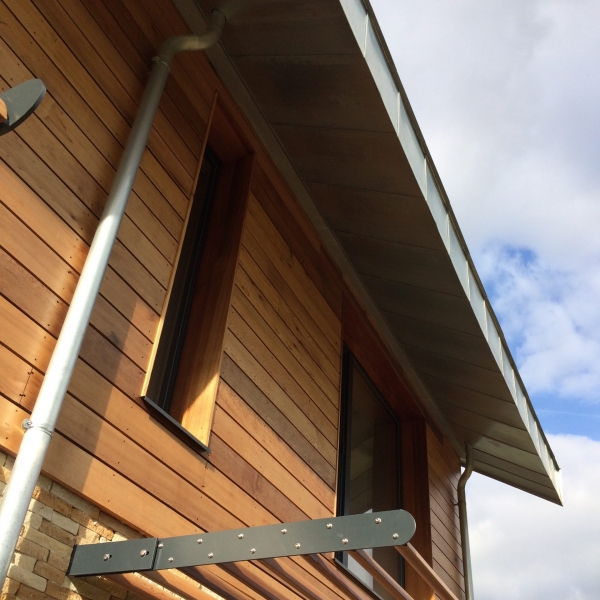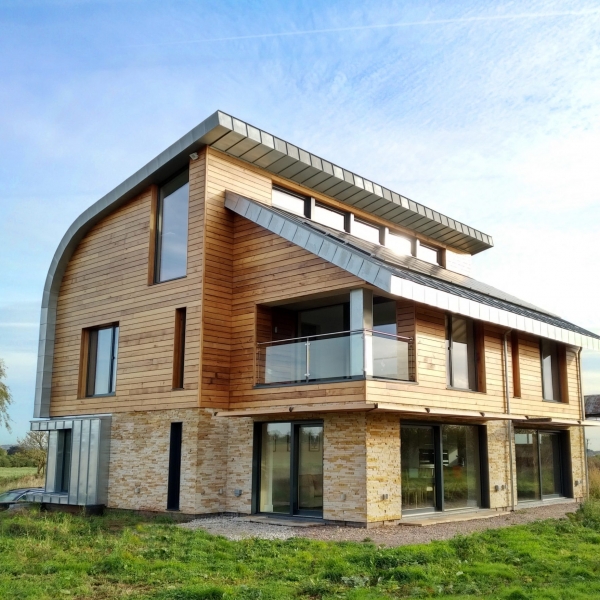Client: Private Client
Location: South Derbyshire
Marsh Flatts Farm is located in the Derbyshire ‘Greenbelt’ and was occupied by a collection of dilapidated agricultural buildings and a recently demolished farm house. It’s within close proximity to a large, densely populated town making this a semi-rural plot, without mains gas or drainage.
Our client required us to design a generous ‘Passivhaus Plus’ home. This refers to a rigorous voluntary standard originating in Germany for energy efficiency in a building, reducing its ecological footprint. It results in ultra-low energy buildings that require very little energy for space heating or cooling; specifically this is around a 75% reduction in space heating requirements, compared to standard practice for UK new builds.
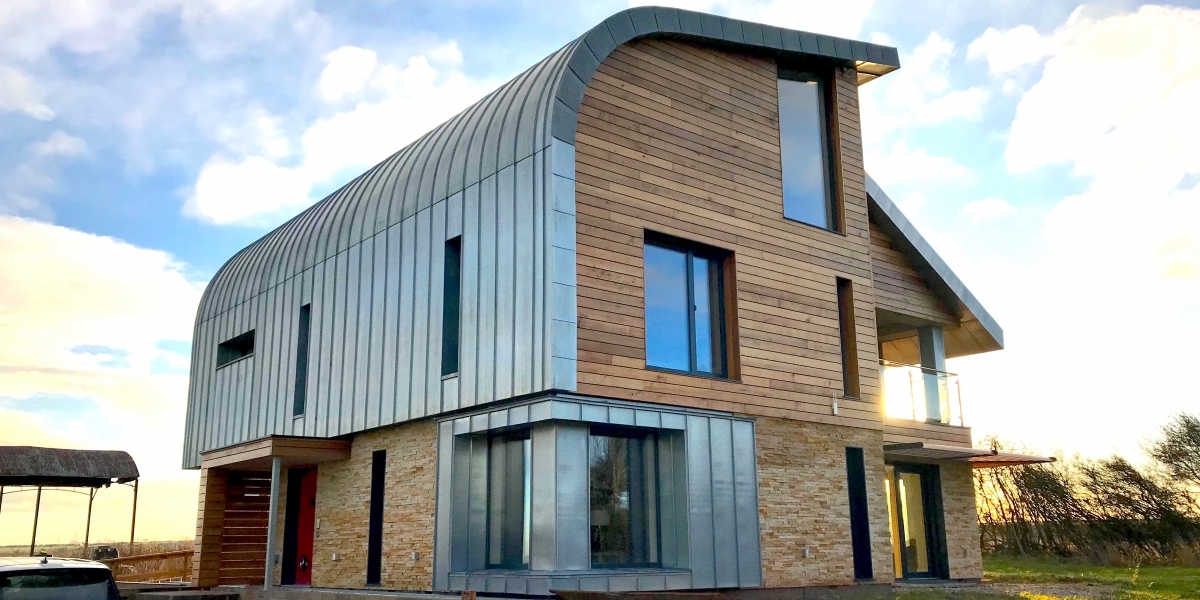
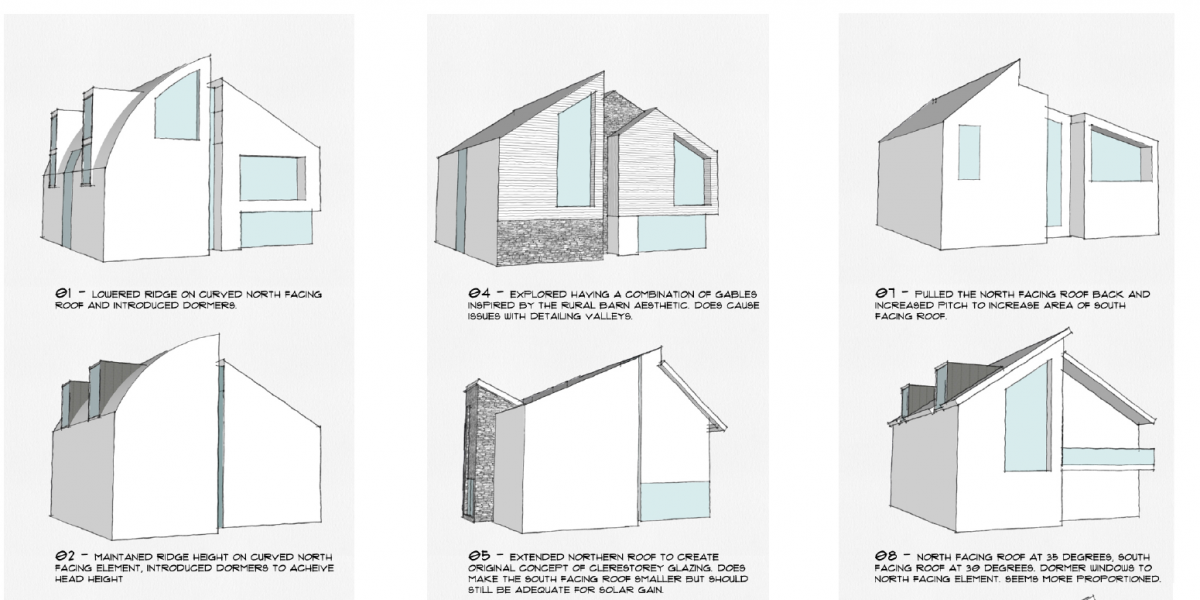
In addition to the functional requirements, the new house needed to respond to the natural characteristics of the site and surrounding area whilst retaining a contemporary style. A particular concern of the client was that any attempt to copy a traditional farm-style building may look like a poor ‘mock’ replica, and so this was to be avoided.
In order to achieve these stringent energy consumption requirements, early consideration had to be given to the shape, scale, format and orientation of the building, largely due to the effect the sun and its path have on the temperature levels within the building throughout the day at various times of year.
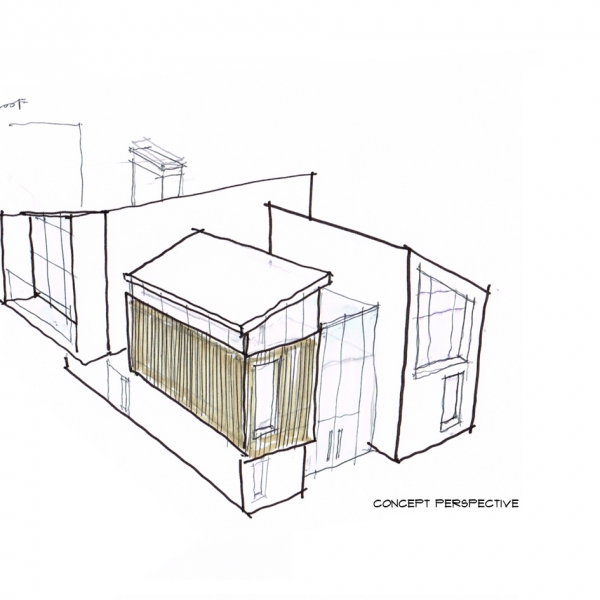
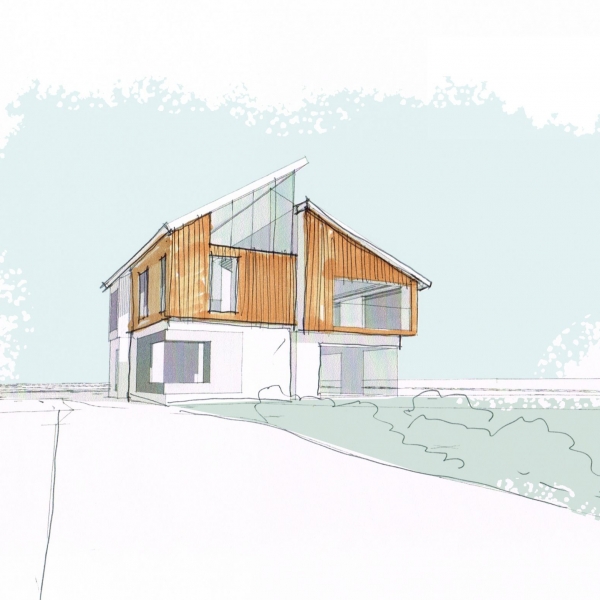
It is far more likely that a building will achieve Passivhaus standard if it is generally cuboid in form, as it is the most efficient use of space, requiring the least amount of construction material and has the smallest surface area in which to leak heat or air.
Using this as a starting point, our concept analysis investigated how the specific site conditions effected the house; this included the influence from the wind, the sun, the surrounding topography and existing site features like trees and the adjacent outbuildings that would provide an element of shielding. Multiple options were considered following precedent research and discussion with the client to establish a style preference.
A curved roof form with a stepped level was agreed early on, as this permitted the optimum angle for a solar PV array, and clerestory windows at high level to flood the interior space with natural light (reducing the need for artificial lighting).
Typically, we would consider the internal configuration of the layout at this early stage, but instead we turned our attention more to fenestration, as the position of windows was a contributing factor in the achievement of a Passivhaus standard. Sizing and positioning was critical so that if located on the southern elevation, the house wouldn’t overheat from excessive solar gain, or if on the northern elevation, they wouldn’t cause too much heat loss.
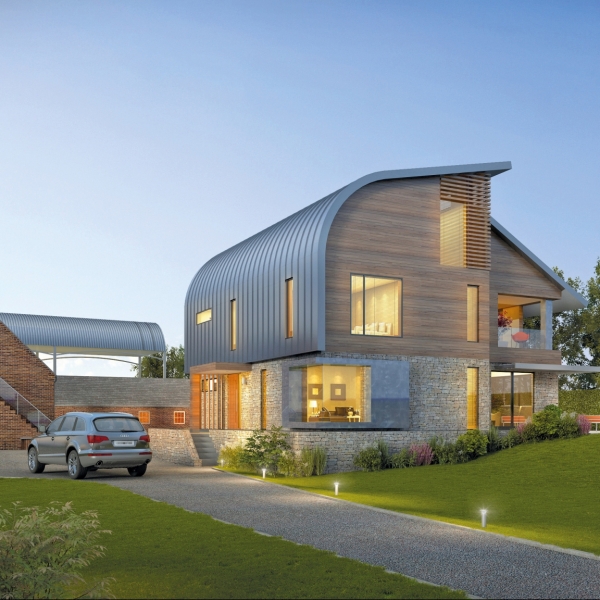
Set over 2.5 storeys and sited in the same location as the original farm house, the layout was compact and meticulously efficient. A stepped access is provided up from the driveway to a covered flat roof canopy outside an over-sized entrance doorway.
The entrance hallway features a seemingly weightless staircase of large oak treads and open risers, with fully glazed raking balustrade recessed into each step. A through-cut in the floor above, adjacent the staircase offers views to the upper-most floor and fills the space with light, which grants access to all rooms on the ground floor, which includes a formal lounge and dining room, shower room/WC and the open plan living spaces.
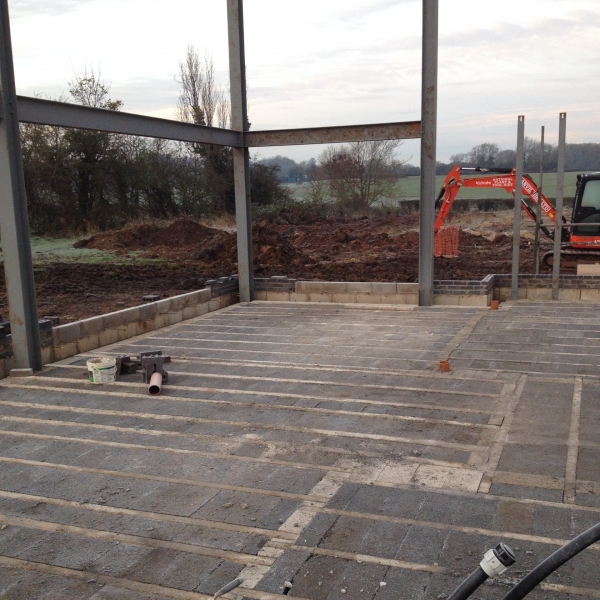
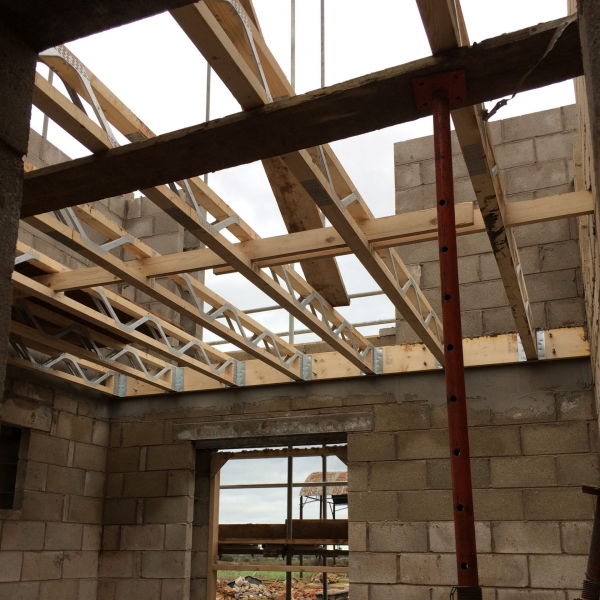
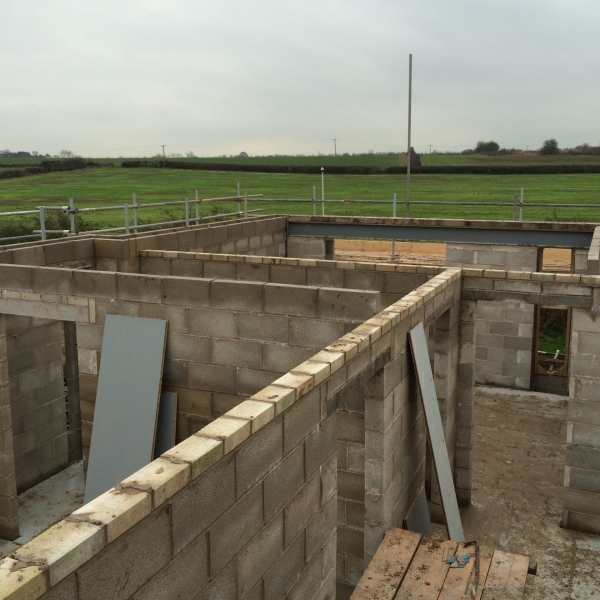
Upper floors accommodate five large double bedrooms with en-suite bathrooms and dressing rooms. The master suite, which is situated on the south elevation and overlooks the private garden, benefits from an external covered terrace and full height vaulted ceiling.
Materiality presented an opportunity to harmonise the building with the landscape, and included a palette of traditional finishes used in a contemporary fashion. Zinc sheets with standing abutment seams followed the curve of the roof and transitioned into the walls below, where they meet coursed natural buff stone, typical of Derbyshire. Elsewhere, the walls are clad with a rich ‘Golden’ Western Red Cedar, laid horizontally with stainless fixings and open vented joints for a ‘rugged’ feel.
General construction was a hybrid of traditional methods, steel framing and Modern Methods of Construction (MMC’s). From the ground up, foundations would be traditional mass concrete filled trenches with a cavity wall construction above to roof level. Cavities were oversized which would allow a large amount of high-performance insulation to be blown into the voids. High levels of workmanship were required as mortar snots or debris would compromise the thermal efficiency of the wall construction.
The roof comprised Structural Insulated Panels (SIPs), which are sandwich panels of high strength OSB bonded to insulation, and were faceted to achieve the curved design. The connection between alternating materials is often a weak point for air (and heat) to leak from the building, and so robust sealing details were specified to avoid this.

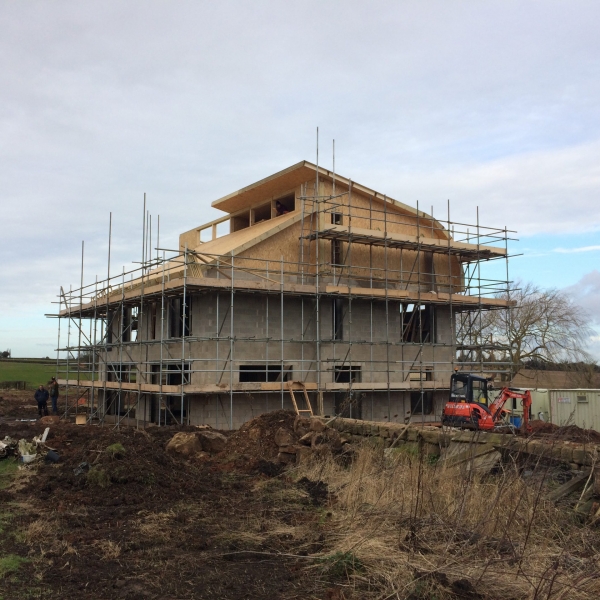
Extraordinary consideration to architectural detailing was needed to ensure maximum resistance to thermal losses, which by regular standards would be considered acceptable. This included specialist thermal break materials within the structure that would prevent heat from inside the dwelling transferring into the construction materials and dissipating.
